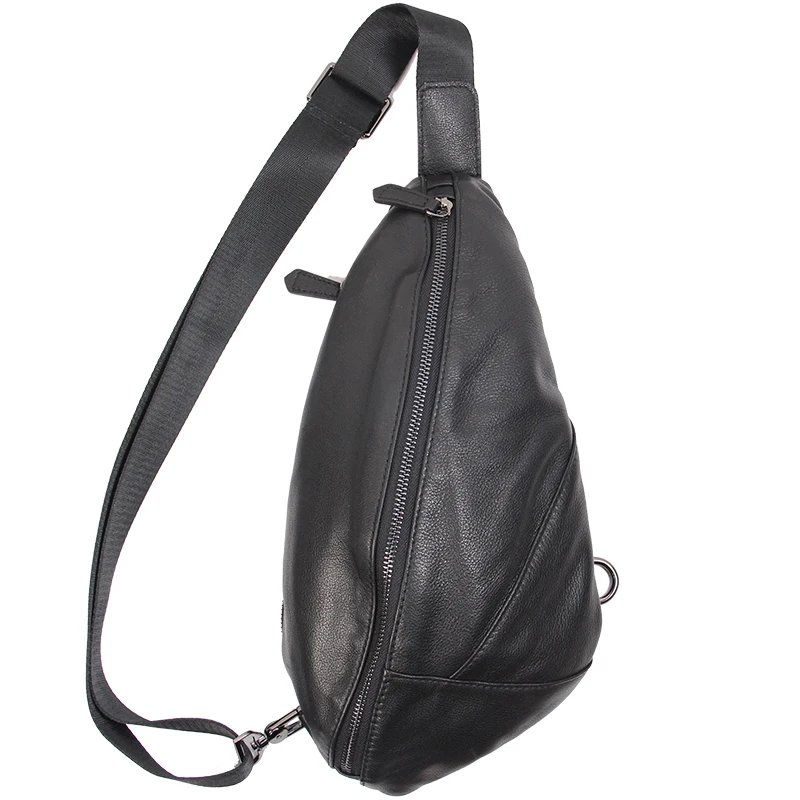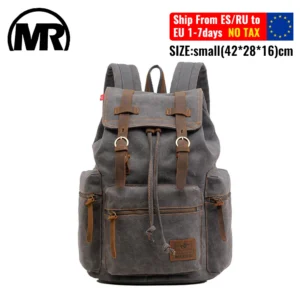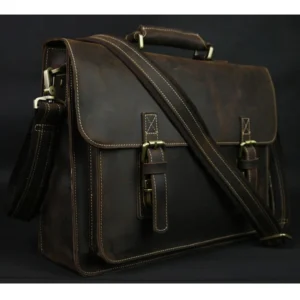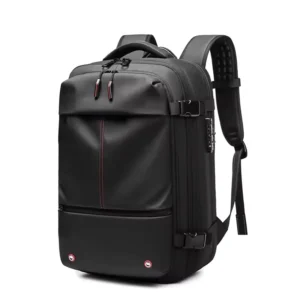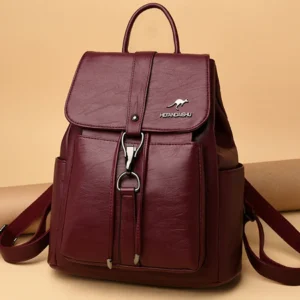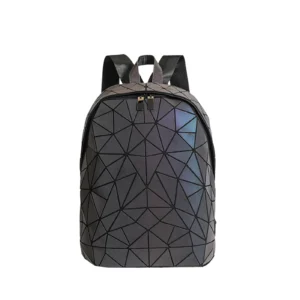Introduction: Why Proper Leather Backpack Care Matters
A quality leather backpack represents not just a purchase, but an investment. With proper care, premium leather develops a rich patina and character that only improves with age, potentially doubling the lifespan of your cherished accessory. Neglected leather, however, tells a different story—it cracks, dries out, and deteriorates prematurely.
Leather is fundamentally a natural material with unique properties that require specific attention. Unlike synthetic materials, it breathes, absorbs, and reacts to its environment. Regular maintenance isn’t just about keeping your backpack looking good; it’s about preserving its structural integrity and functionality for years to come.
Establishing an effective leather care routine doesn’t have to be complicated. With the right products and techniques, you can ensure your backpack maintains its beauty and durability throughout its life. Understanding fundamental leather conditioning and waterproofing techniques forms the foundation of proper care for any leather item you own.
Understanding Different Leather Types and Their Care Requirements
Before selecting care products, you must first identify what type of leather your backpack is made from. Different leather varieties have distinct characteristics and care needs:
Full-Grain Leather: The highest quality and most durable leather available. It retains the natural grain and imperfections, developing a beautiful patina over time. Requires regular conditioning but is quite forgiving with proper care.
Top-Grain Leather: The second-highest quality, with the outermost layer sanded and buffed to remove imperfections. More uniform in appearance than full-grain but still durable. Needs consistent protection as it’s slightly less resistant to elements.
Genuine Leather: Despite its name, this is actually a lower grade, made from the split layers beneath top-grain. Often treated with dyes and sealants to improve appearance. Requires more frequent conditioning to prevent cracking.
Suede/Nubuck: These leathers have a raised nap (fuzzy texture) and require specialized cleaners and protectors. They’re particularly vulnerable to water and staining.
Pebbled/Textured Leather: Features an embossed pattern that can hide minor scratches. Care is similar to smooth leather but requires attention to cleaning within the texture.
Patent Leather: Has a glossy, plastic-like finish that requires specific cleaners designed not to damage the coating.
Many people mistakenly believe all leather care products work universally. This misconception can lead to damaged backpacks when, for example, using oil-based conditioners on suede or harsh cleaners on delicate finishes. Always perform a patch test on an inconspicuous area before applying any new product to your backpack.
Our full-grain leather backpacks represent the premium standard in durability and character development, but even these exceptional materials require proper maintenance to reach their full potential.
Essential Leather Care Product Categories
A. Leather Cleaners
Leather cleaners serve as the first step in proper maintenance, removing accumulated dirt, oils, and stains without stripping the leather’s natural properties. When your backpack shows visible soiling or feels tacky to the touch, it’s time for a thorough cleaning.
pH-balanced mild leather cleaners: Ideal for regular maintenance cleaning. These gentle formulations remove surface dirt without drying out the leather.
Saddle soap: A more robust option for heavy-duty cleaning of smooth leathers. Contains mild soap combined with conditioning ingredients to prevent drying.
Specialized suede/nubuck cleaners: Available in foam, liquid, or eraser forms, these products clean without matting or damaging the delicate nap of these leathers.
B. Leather Conditioners
Conditioning replaces natural oils that evaporate over time, preventing leather from drying out and cracking. The right conditioner keeps your backpack supple and resilient.
Cream-based conditioners: These versatile options absorb well into most leather types without excessive darkening. They provide a good balance between nourishment and maintaining the leather’s original appearance.
Oil-based conditioners: These penetrate deeply into the leather fibers, providing intensive nourishment. Be aware they may darken leather significantly, especially lighter colors.
Waxes and balms: These create a protective barrier while conditioning and typically leave a slight sheen on the leather surface.
The frequency of conditioning depends on your environment and usage patterns. In dry climates, your backpack might need conditioning every 3-4 months, while humid environments might extend this to 6 months. The comprehensive techniques for conditioning leather backpacks can help you determine the perfect schedule for your specific item.
C. Leather Protectors
Protectors create invisible barriers against water, stains, and UV damage, extending your backpack’s life significantly.
Water-repellent sprays: Available in silicone and silicone-free formulations. Silicone-free options allow the leather to breathe better but may require more frequent reapplication.
Wax-based waterproofers: Provide more robust protection for backpacks exposed to harsh elements, but may alter the leather’s feel and finish slightly.
Combination products: These 2-in-1 formulas both condition and protect, simplifying the maintenance process.
Understanding the detailed methods for waterproofing leather bags will help you choose the appropriate protection strategy for your specific backpack and usage conditions.
D. Essential Tools for Leather Care
The right tools ensure effective product application and proper leather maintenance:
Soft microfiber cloths: Essential for applying products and buffing leather without scratching or leaving lint.
Soft-bristled brushes: Used for removing surface dust, working in cleaners, and restoring nap on suede or nubuck.
Specialized tools: Suede brushes, erasers, and crepe brushes designed specifically for textured leathers.
Storage containers: Keep your leather care products in cool, dry places with lids tightly secured to prevent drying out.
Step-by-Step Guide: How to Clean Your Leather Backpack
1. Preparation
Begin by emptying all pockets and compartments completely. Even small forgotten items can create pressure points that might damage the leather during cleaning. Remove surface dust and loose dirt with a soft cloth or brush, using gentle strokes to avoid scratching the leather. If your backpack has metal hardware that might be affected by cleaning products, consider protecting these elements with painter’s tape.
2. General Surface Cleaning
For light cleaning, dampen (not soak) a soft cloth with distilled water and gently wipe the surface. For more thorough cleaning, apply a small amount of appropriate leather cleaner to a cloth—never directly onto the leather. Work in small sections using gentle circular motions, allowing you to control the amount of product and pressure used. Pay special attention to areas that come in contact with your body, as these accumulate oils and dirt more quickly.
3. Targeted Spot Treatment
Different stains require specific approaches:
– Water spots: Use a slightly damp cloth to feather the edges of the spot outward.
– Oil stains: Apply cornstarch or talcum powder to absorb the oil before cleaning.
– Ink stains: Use a specialized leather ink remover, applying sparingly with a cotton swab.
Always use a dabbing motion rather than aggressive rubbing, which can damage leather fibers or push stains deeper into the material.
4. Rinsing and Drying
After cleaning, wipe the surface with a clean, slightly damp cloth to remove any cleaner residue. Allow your backpack to air-dry naturally at room temperature, away from direct heat sources like radiators, hair dryers, or sunlight, which can cause leather to crack or warp. To maintain the backpack’s shape during drying, stuff it loosely with clean white paper (not newspaper, which can transfer ink).
Avoid the common mistake of using household cleaners like wipes, vinegar solutions, or all-purpose cleaners, which contain chemicals that can strip leather’s natural oils. For travelers who need to maintain their backpacks on the go, DIY leather care methods for travel backpacks offer practical solutions using minimal supplies.

The Art of Conditioning: Nourishing Your Leather Backpack
1. Selecting the Right Conditioner
The conditioner you choose should match your specific leather type. For full-grain leather backpacks, cream-based conditioners typically offer excellent results without excessive darkening. Consider your local climate when selecting products—drier environments require more emollient conditioners, while humid areas benefit from lighter formulations that won’t promote mildew. Also think about your preferred finish—some conditioners leave a matte appearance while others create a subtle sheen.
2. Applying Conditioner Properly
With conditioning, less is definitely more. Apply a small amount to a clean cloth—about the size of a quarter for a standard backpack panel. Using gentle circular motions, work the conditioner into the leather evenly. Pay extra attention to high-flex areas like straps, handles, and corners that experience the most movement and stress. These areas tend to dry out faster and benefit from slightly more conditioning.
3. Absorption and Drying
Allow the conditioner to absorb into the leather for the time recommended by the product manufacturer—typically 15-30 minutes. Properly conditioned leather should feel slightly softer and more supple without appearing greasy. If the leather feels tacky or has a visible residue, you’ve applied too much product. In this case, gently buff away excess with a clean, dry cloth.
4. Buffing for Desired Finish
After absorption, buff the leather with a clean microfiber cloth using small circular motions, then longer strokes in the same direction. This technique distributes any remaining conditioner evenly and enhances the natural luster of the leather. For a higher shine, increase buffing time; for a more matte finish, use minimal buffing.
Our vintage leather backpack collection particularly benefits from regular conditioning, as it helps maintain the character while preventing the leather from becoming too dry and brittle with age.
Protection Strategies: Safeguarding Against Water, Stains, and UV Damage
Proper protection extends your backpack’s life dramatically by creating invisible barriers against environmental threats:
- Water and stain repellent application:
- Hold spray products 8-12 inches from the surface for even distribution
- Apply in light, overlapping passes rather than heavy single coats
- Allow each layer to dry completely (typically 15-30 minutes) before applying additional coats
Let the protectant cure fully (usually 24-48 hours) before exposing to moisture
UV protection strategies:
- Choose products containing UV inhibitors for backpacks frequently used outdoors
- Store your backpack away from direct sunlight when not in use
Consider seasonal rotation of bags to limit extended UV exposure
Environmental considerations:
- In snowy regions, increase waterproofing before winter months
- In humid environments, use products that inhibit mildew growth
For dry climates, combine protection with more frequent conditioning
Reapplication schedules:
- Water beading noticeably diminishes when protection is wearing off
- Most protectants need reapplication every 3-6 months with regular use
- After heavy exposure to elements, reapply regardless of time elapsed
The question of whether oiling leather provides effective waterproofing depends largely on the specific product and application technique used—some oils offer moderate water resistance while others focus primarily on conditioning.
Troubleshooting Common Leather Backpack Issues
Water Damage and Rain Spots
If your backpack gets caught in rain, gently blot (don’t rub) excess moisture with an absorbent cloth. Allow it to dry naturally at room temperature. For water spots that have already dried, slightly dampen a cloth and gently feather outward from the spot to blend the edges. Follow with conditioner once completely dry. For severe water damage, products specifically designed to address water staining can help restore even coloration.
Scratches and Scuffs
Minor scratches often respond well to gentle rubbing with a clean fingertip—the natural oils help blend the scratch into surrounding leather. For deeper scratches, apply a small amount of conditioner to the area and gently work it in using circular motions. For color-matched touch-ups on noticeable scratches, specialized leather fillers or color-matched polish can help camouflage the damage.
Oil and Grease Stains
Fresh oil stains can be addressed by immediately applying cornstarch or talcum powder to absorb the oil. Let it sit for several hours or overnight, then brush away. For set-in oil stains, specialized leather degreasers applied sparingly may help. Be patient—sometimes multiple gentle treatments work better than one aggressive approach.
Mold and Mildew
If you discover mold or mildew, take the backpack outside to prevent spore spread, then gently wipe the affected area with a cloth dampened in a solution of isopropyl alcohol and water (1:1 ratio). Once clean and completely dry, apply a light coating of conditioner, followed by a mildew-inhibiting leather protector.
Color Fading and Restoration
Minor fading can often be improved with conditioning alone, which revives the leather’s natural colors. For more significant fading, color-matched leather creams can restore tone without creating an artificial painted look. For extensive color loss, consider professional restoration services.
Understanding what constitutes quality leather in backpacks helps you set realistic expectations for how your specific piece will respond to different restoration techniques.
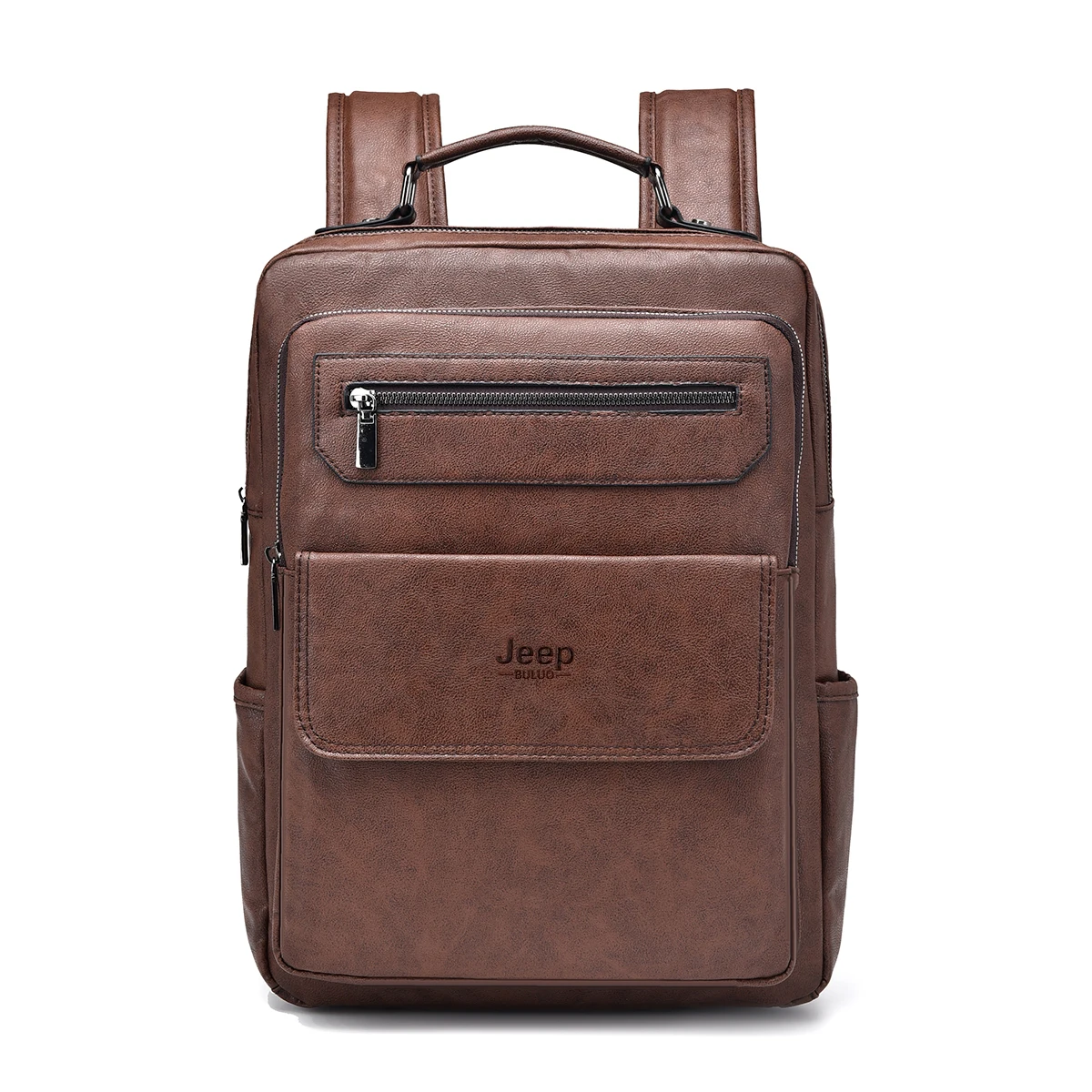
Long-Term Care: Maintenance Schedule and Best Practices
Daily/Weekly Quick Care
- Wipe down your backpack with a dry, soft cloth after each use
- Address any small spots or stains immediately before they set
- Check zippers and hardware for dirt buildup that could transfer to leather
Monthly Maintenance
- Perform a thorough inspection for signs of wear or drying
- Apply light conditioning to areas that receive the most handling (straps, handles)
- Clean any accumulated dust from seams and corners with a soft brush
Seasonal Deep Care
- Complete cleaning, conditioning, and protection routine
- Adjust product selection based on upcoming seasonal challenges
- Consider professional cleaning annually for heavily used backpacks
Storage Best Practices
- Store in cool, dry environments between 65-72°F (18-22°C) with 40-60% humidity
- Use acid-free paper or clean cotton to stuff the backpack and maintain shape
- Utilize breathable cotton dust bags rather than plastic covers
- Allow air circulation around the stored backpack
Usage Habits for Longevity
- Distribute weight evenly throughout compartments
- Handle with clean hands to prevent oil and dirt transfer
- Rotate usage with other bags to allow leather to rest and recover
For those using their backpacks daily for work commutes, following specific leather maintenance practices for commuters can significantly extend the life of your investment while maintaining professional appearance.
Leather Backpack Care: Essential Do’s and Don’ts
Do’s:
- Test all new products on a small, hidden area first
- Use products specifically formulated for leather care
- Clean spills and stains immediately
- Allow proper drying time between care steps
- Store with adequate air circulation
- Handle with clean hands to prevent oil transfer
Don’ts:
- Use household cleaners, dish soap, or baby wipes
- Apply alcohol-based products that dry out leather
- Submerge or saturate leather with water
- Dry with direct heat (hairdryers, radiators, etc.)
- Store in plastic bags that trap moisture
- Over-apply conditioners, which can clog leather pores
- Use products with heavy silicone that prevent leather from breathing
Some consumers don’t realize that common household cleaning products contain detergents and chemicals that strip away leather’s natural oils. Even “gentle” products like baby wipes contain ingredients that can damage leather over time.
Our leather laptop backpacks represent a significant investment that benefits greatly from following these care principles, especially given their frequent use in professional environments.
Top Recommended Leather Care Products for Different Backpack Types
All-In-One Care Kits (Best for Beginners)
- Look for kits containing pH-balanced cleaner, conditioner, and protectant
- Ensure the kit specifies compatibility with your leather type
- Quality kits typically range from $25-45
Best Cleaners by Leather Type
- For smooth leather: Gentle, pH-balanced cleaner without harsh detergents
- For suede and nubuck: Specialized foam cleaners or cleaning blocks
- For aged/vintage leather: Extra-mild formulations with minimal surfactants
Best Conditioners by Climate and Leather Type
- For dry climates: More emollient, oil-enriched conditioners
- For humid environments: Lighter, water-based conditioners with mildew inhibitors
- For vintage/aged leather: Restoration conditioners with higher lanolin content
Top Protective Products
- Water and stain repellents: Look for breathable formulations without heavy silicones
- UV protectants: Products containing UV inhibitors for sun-exposed bags
- All-weather protectors: Wax-based products for backpacks exposed to extreme conditions
Quality leather care products may cost more initially but represent a small investment compared to the cost of replacing a premium backpack. The key ingredients to look for include natural waxes, lanolin derivatives, and jojoba oil, while avoiding petroleum distillates, harsh alcohol, and silicone in high concentrations.
14 Inch Leather Laptop Backpack, Brown Leather Backpack, Men's Leather Backpack, Vintage Leather Backpack
Price range: $177.28 through $199.12 Select options This product has multiple variants. The options may be chosen on the product pageDesigner Men's Backpack, Men's Leather Laptop Backpack, Men's Leather Work Backpack
Price range: $158.04 through $160.04 Select options This product has multiple variants. The options may be chosen on the product page15 Inch Leather Laptop Backpack, Leather Briefcase Backpack
$332.96 Select options This product has multiple variants. The options may be chosen on the product page17 Inch Leather Laptop Backpack, Men's Leather Travel Backpack, Men's Leather Work Backpack
Price range: $106.28 through $143.88 Select options This product has multiple variants. The options may be chosen on the product pageLuxury Leather Backpack, Small Leather Backpack, Women's Leather Backpack
Price range: $137.48 through $138.28 Select options This product has multiple variants. The options may be chosen on the product pageDesigner Women's Backpack, Luxury Leather Backpack
Holographic Geometric Laser Diamond PU Leather Women’s Fashion Backpack with Glow-in-the-Dark Design$112.20 Select options This product has multiple variants. The options may be chosen on the product page
Our luxury leather backpack collection deserves care products of equivalent quality to maintain their exceptional appearance and functionality throughout years of use.
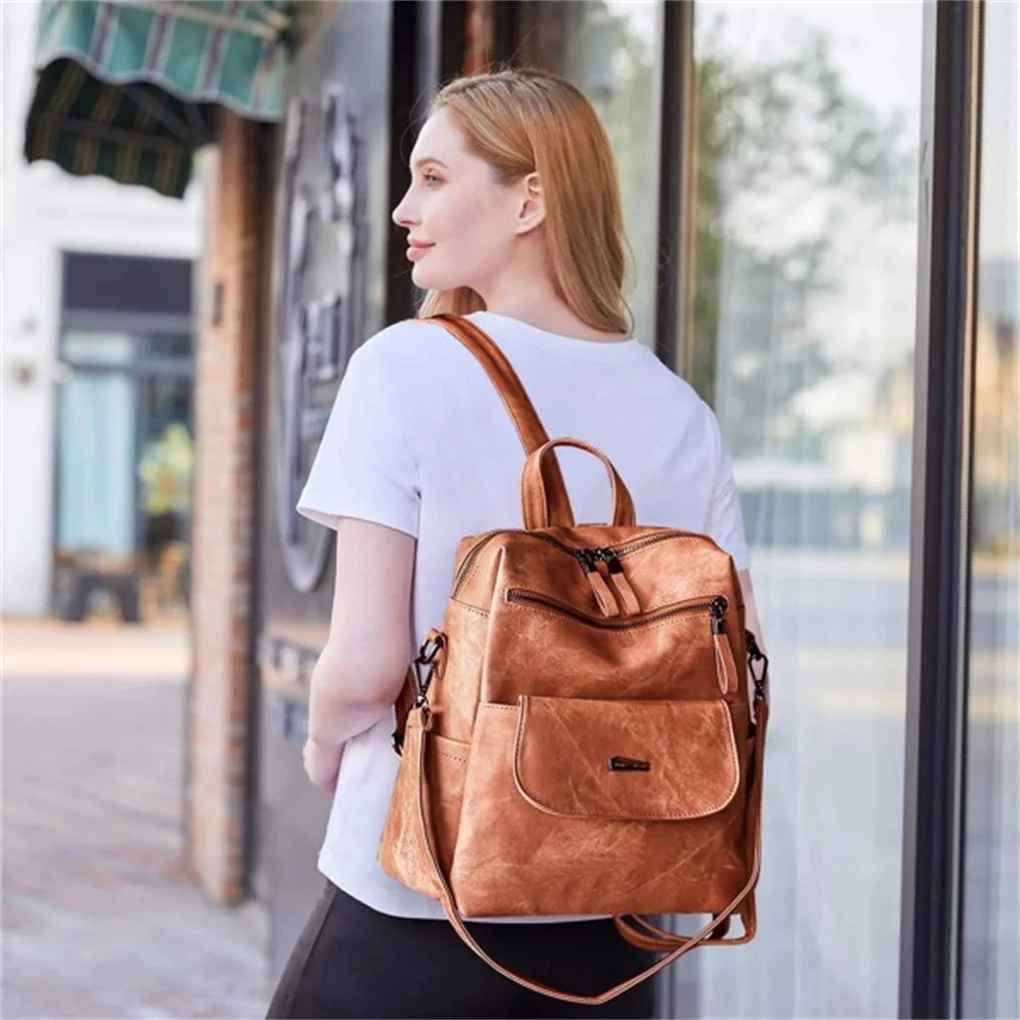
Supplemental Content: Special Considerations for Your Leather Backpack
Can I use household products instead of specialized leather care items?
No, household products typically contain detergents, chemicals, or pH levels that damage leather. While some DIY methods using minimal ingredients like white vinegar diluted with water can work in emergencies, specialized leather care products are formulated specifically to clean without stripping essential oils.
How often should I condition my leather backpack?
Most leather backpacks benefit from conditioning every 3-6 months with normal use. However, this varies based on climate, usage conditions, and leather type. If your backpack feels dry or stiff, or appears dull, it likely needs conditioning regardless of time elapsed since the last treatment.
Is it possible to restore severely dried-out or cracked leather?
While severely damaged leather can’t be completely restored to new condition, significant improvement is possible with patient, progressive treatment. Multiple light applications of quality conditioner over several days often yield better results than one heavy application. Understanding whether leather should dry before conditioning is crucial for effective restoration.
Can I use the same products on my leather backpack as I use on leather shoes?
Sometimes, but with caution. While basic leather care principles are similar, shoe products often contain higher concentrations of waxes and waterproofing agents designed for footwear’s ground-level exposure. These may be too heavy for backpacks, potentially causing over-conditioning or finish changes.
What’s the best way to store a leather backpack for long periods?
Clean and condition the backpack thoroughly before storage. Stuff it with acid-free tissue paper to maintain shape. Place it in a cotton dust bag or pillowcase (never plastic), and store in a cool, dry closet with good air circulation. Check periodically for signs of mold or excessive drying.

